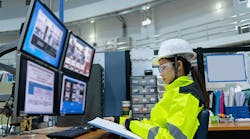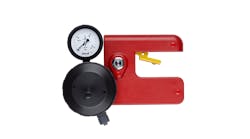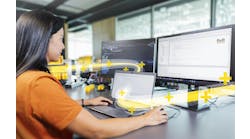Just as process disciplines require common ground for consistent process safety, they also need to coordinate when seeking financial support for safety programs.
"It's hard to get funding for process safety because, even though all sides are trying to identify bad actors and prevent injuries and damage, there are still multiple disciplines involved with goals that can seem different initially," says Mike Scott, CEO of aeShield. "Process safety engineers want to execute process hazard analysis (PHA) and layers of protection analysis (LOPA), and want to identify layers and targets. Functional safety personnel want safety integrity level (SIL) calculations and safety requirement specifications. Meanwhile, operations and maintenance staffers have different tasks and safety notebooks, but often don't know about the SILs and LOPAs that the others focus on. Consequently, when a relief valve pops, users may do a root-cause analysis, but if it's difficult, they may also just restart. This is where digitalized tools can improve safety because they're easier to apply, so they're more likely to be used."
Because so many process engineers and other professionals worked at home during the COVID-19 pandemic, Scott reports more are aware of digitalized tools, and how they can use them and their data to advocate for safety. This is crucial because process safety remains a hard sell, which it's difficult to secure investment for because it mostly generates only soft savings due to accidents prevented. "We have to show clients that database-oriented, safety-management software like aeShield can save money upfront, and then add that it will make their operations safer and more in compliance," says Scott. "Still, there has been a big shift in this direction. Over the last two years, we've interviewed more than 24 global multinationals, which included 59,000 safety functions and 147,000 protection layers. It's initially labor-intensive to deal with standalone documentation, but the available savings are massive by digitalizing old safety notebooks. letting tablet PCs collect live data, and automating tasks like HART testing."
This article is part of a series on process safety. Check out the rest of the series here.
Scott explains that many paper documents with safety-related data from operations and maintenance never get used. However, digital versions are easier to share with enterprise resource planning (ERP), management executions systems (MES) and other software that can define and direct safety tasks. They can also work in conjunction with real-time (RT) locating devices to assist interlock functions, improve standard operating procedures (SOP) for safety, and soon develop key performance indicators (KPI) that can give managers the single safety number they want to fuel investment in it.
"Software like aeShield can run enterprise-wide locally or in the cloud, examine an organization's pool of processes, find patterns, and identify disconnects and bad actors," says Scott. "aeShield is middleware that's located between process historians and computerized maintenance management systems (CMMS). This lets it work with PHAs, LOPAs and SIL calculations, serve as a process safety and functional safety analysis engine, and compare field data with what users assume is going on with their designs. In fact, many traditional SOPs are being replaced with software that can drive their operations rounds and measure savings. The problem is operations risk management (ORM) software for large, individual events is still in silos, and we don't have a holistic way of pulling them together yet. Digitalized models and RT performance indicators will show existing gaps, make risks more visible, improve designs and interlocks, and hopefully show us the dollar figure needed to get to certain safety levels."






